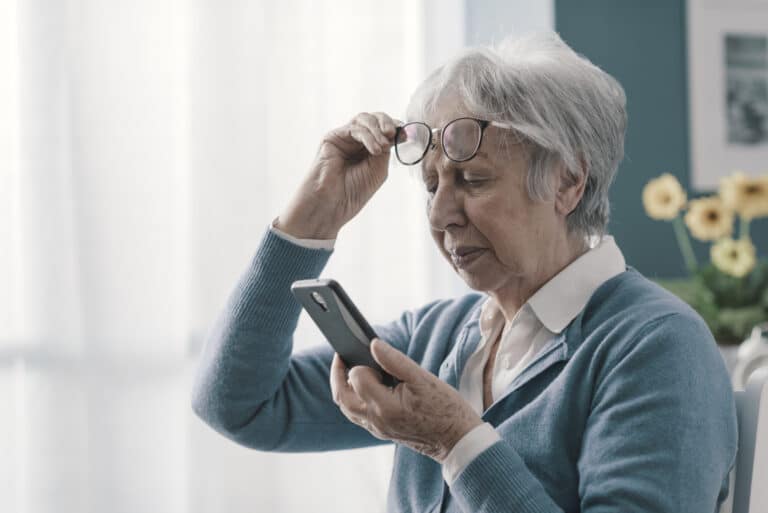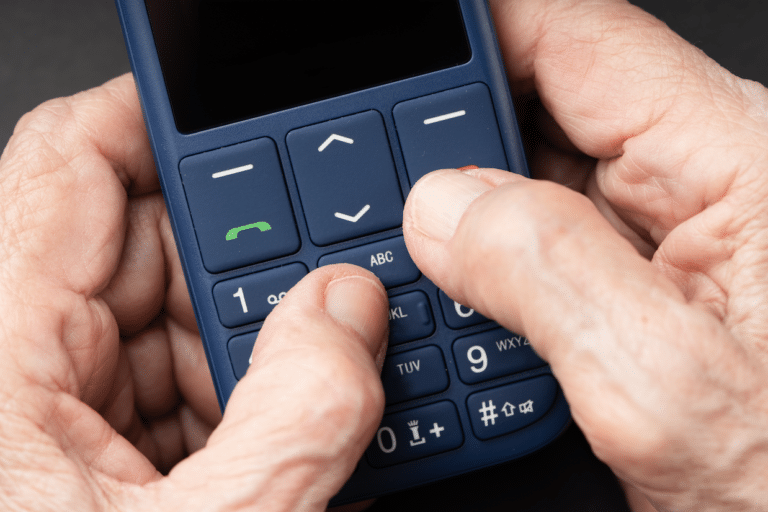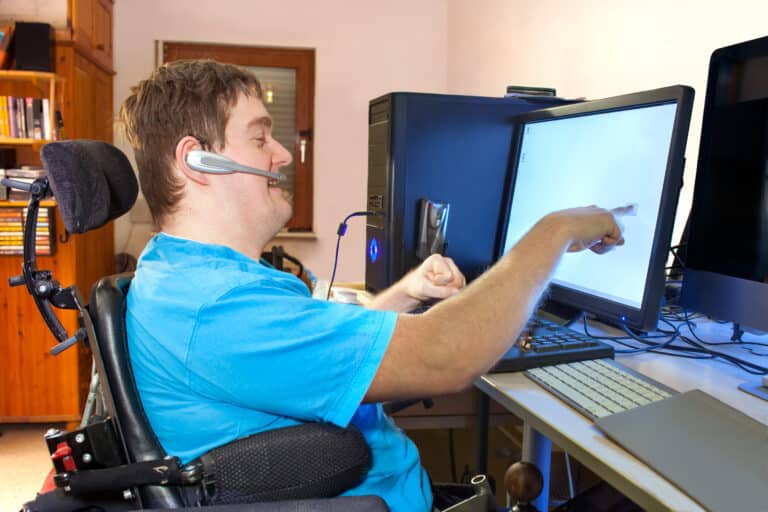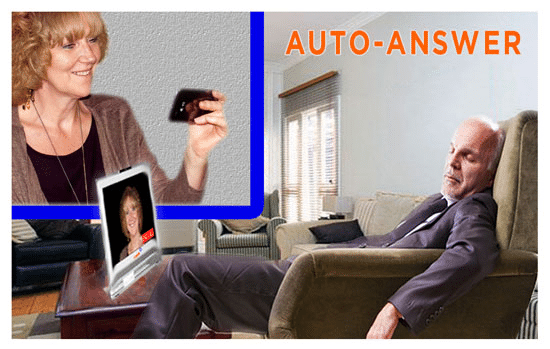Written by Karl Grimm, Sep 2023:
Mobile phones (also known as cellphones) and other communication devices have become an integral part of modern life, providing a means of communication, entertainment, and access to essential services.
However, for people with disabilities, accessing and using mobile phones can be a significant challenge.
Inaccessible phones can exclude people from society, limit their access to information and emergency services, and impact their mental health.
Accessible phones, on the other hand, take into consideration features such as:
- Screen size and button size
- Overall look, feel and design
- Connectivity capabilities
- Captioning functionality
- Ease of use
What’s more, it is important to recognise that for people with a disability, accessible phones are essential for several reasons, including:
- Social connection
- Access to essential services
- Ability to live a dignified life
- Prioritize the upkeep of independence
This article explores many of these reasons in detail, including the key features of accessible phones, the challenges faced by mobile manufacturers in making phones accessible, and the future of accessible phones for all.
Let’s get started with the basics.
Understanding the impact of inaccessible phones on people with disabilities
According to a 2020 report by Pew Research Center, United States of America (USA), just 81% of people with a disability in the US own a smartphone, compared to 91% of those without a disability.
Why might this be the case?
Firstly, it’s important to understand that the impact of inaccessible phones on people with disabilities can be significant.

For people with mobility or dexterity needs, small buttons and touchscreens can be difficult to navigate. For those with hearing or vision difficulties, phone calls and text messages may be challenging or impossible to access. For people with cognitive disabilities, the complexity of modern smartphones can be overwhelming.
What’s more, inaccessible phones can also limit social connection, as people with disabilities may struggle to communicate with friends and family, access online services, or participate in social media.
When we consider the research linking disability with loneliness and lack of social connection, the need for accessible communication technology becomes even more obvious.
According to a 2019 report by the Jo Cox Commission on Loneliness in the UK, around 62% of adults with disabilities often or sometimes feel lonely, and almost half (49%) report that their disability is a barrier to building social connections. The same report also found that people with disabilities are less likely to have regular social contact than others, and are more likely to experience social isolation and loneliness.
So what does an accessible phone actually look and feel like?
Key features of accessible phones for people with disabilities
Accessible phones usually include a range of features that can help people with disabilities access and use their phones more easily.
Some of the key features include:
- Text-to-speech and speech-to-text capabilities, which can help people who are deaf / hard-of-hearing or have difficulty speaking communicate more easily
- High-contrast displays and screen readers, which can assist people with low vision to read text and navigate the phone
- Physical buttons or larger buttons and screens, which can assist people with mobility or dexterity needs to navigate the phone
- Simplified interfaces, which can assist people with cognitive disabilities to use the phone more easily
- Emergency-calling features, which can assist people in crisis situations to quickly and easily call for help
- Captioning function to assist Deaf people or those who are hard-of-hearing
Of course, many of the world’s current smartphones already boast so-called accessible features. However, it’s important to understand that for many other communities around the world, these accessibility features can still fall short.
Challenges faced by mobile manufacturers in making phones accessible
In today’s digital world, mobile manufacturers face a number of challenges in making phones accessible.
One of the biggest challenges is the need to balance accessibility with the demands of mainstream consumers. Mobile phones are complex devices, with a wide range of features and capabilities, and it can be challenging to design phones that are both accessible and appealing to the wider market.
Top 5 challenges of mobile phones and tablets
- Small screens and buttons, cumbersome sliders and dropdowns
- Complicated to learn, difficult to remember common tasks
- Surprising pop-ups, and notifications reminding you to update
- Tiny, tinny speaker, and the lack of a traditional handset
- A fiddly charging connector; and if you forget to charge, the phone goes flat silently and is hard to find

Additionally, accessibility needs vary widely across different types of disabilities, and it can be difficult to design phones that meet the needs of all users. Customisation of features and personalisation of contacts are key.
The future of accessible phones for people with disabilities
The future of accessible phones looks promising, with mobile manufacturers making significant strides in recent years to improve accessibility.
What’s more, smart device usage is beginning to increase amongst communities of people with disabilities worldwide, including Australia, providing welcome encouragement to companies innovating in this area.

According to a 2020 ACMA report, the COVID-19 pandemic has significantly increased smartphone usage among people with disabilities in Australia. About 77% of these individuals use smartphones, and 51% have been using them more frequently since the pandemic began. Additionally, 31% have started using their phones for new purposes, primarily for social interaction. Moreover, people with disabilities are more likely to use their smartphones for social interaction than for other purposes.
In addition to the features mentioned above, newer phones include features such as:
- Video auto-answer for selected callers, to enable trusted family or carers to check in when there is a problem
- Haptic-feedback screens for people with low vision
- A large one-touch assistance button to call for help
- Advanced voice-to-text function, which can assist people who are deaf / hard-of-hearing or have difficulty speaking to communicate more easily
Furthermore, there are also specialized devices that are designed specifically for people with disabilities, such as the Konnekt Videophone and Konnekt Captioning Videophone.
Who can benefit from our product?
The Konnekt Videophone and Konnekt Captioning Videophone cater to different types of disabilities, including:
- Low vision: Large, high-contrast displays and large text size
- Dementia: Simple, easy-to-use interfaces and one-touch calling features
- Arthritis: Large buttons and push-sensitive touchscreens
- Deaf or hard-of-hearing: Captioning function, in multiple languages
- Other disabilities: Multiple mounting options and auto-answer for carers

Wrapping up
Overall, accessible phones are crucial for people with disabilities to fully participate in society, maintain their mental health, and access emergency services.
While challenges remain, advancements in technology and innovative solutions like the Konnekt Videophone and Konnekt Captioning Videophone provide hope for a more inclusive future.
Keen to learn more? Contact us today, or learn more from our hundreds of satisfied customers by discovering our Videophone testimonials and Captioning Videophone testimonials.
References:
- “Communications and media in Australia: Trends and developments in telecommunications 2020–21“, Australian Communications and Media Authority
- “Combatting loneliness one conversation at a time“, Jo Cox Commission on Loneliness
- “Smartphone ownership is growing rapidly among some groups that have historically been slower to adapt”, Pew Research Center
